We use cookies to understand how you use our site and to improve the overall user experience. This includes personalizing content and advertising. Read our Privacy Policy


We are dedicated to providing outstanding customer service and being reachable at all times.

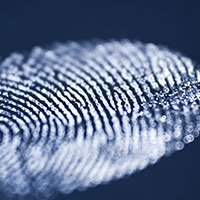
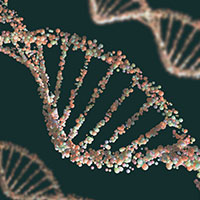

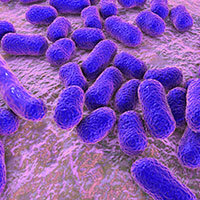
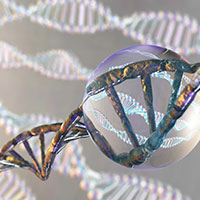
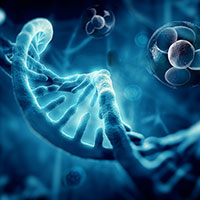
Sample Submission Guideline
DNA Sample Submission Requirements
| Service | Sample Type | Recommended Quantity | Minimum Quantity | Minimum Concentration |
| Whole Genome Sequencing (PacBio) | Genomic DNA | ≥ 3 µg | - | 80 ng/µL |
| Whole Genome Sequencing (Nanopore) | Genomic DNA | ≥ 5 µg | - | 20 ng/µL |
| Plasmid Sequencing (Nanopore) | Genomic DNA | ≥ 1 µg | 500 ng | 10 ng/µL |
| Full-Length 16S/18S/ITS Amplicon Sequencing | Genomic DNA | ≥ 500 ng | - | 10 ng/µL |
| Tissue samples | 1-3 g | 1 g | - | |
| Thallus samples | 5 g | 3 g | - | |
| Fluid samples | 3-5 mL | 1 mL | - | |
| Environmental samples | 3-5 g | 1 g | - | |
| Water filter membrane samples | 3 | 1 | - | |
| Long-Read Metagenomic Sequencing | Genomic DNA | ≥ 2 µg | - | 30 ng/µL |
| Tissue samples | 2 g | 1 g | - | |
| Sediment from interstitial fluid | 6-10 mL, sediment 2g | 2 mL, sediment | - | |
| Environmental samples | 6 g | 2 g | - | |
| Water filter membrane samples | 6 | 2 | - |
RNA Sample Submission Requirements
| Service | Sample Type | Recommended Quantity | Minimum Quantity | Minimum Concentration |
| Iso-Seq | Total RNA | ≥ 2 μg | 600 ng | 30 ng/µL |
| Nanopore Full-Length Transcripts Sequencing | Total RNA | ≥ 2 μg | - | - |
| Nanopore Direct RNA Sequencing | Total RNA | ≥ 15 μg | - | - |
| Nanopore cDNA Sequencing | Total RNA | ≥ 5 μg | - | - |
Sample Preparation Guidelines for DNA Sequencing
Plant Tissue
- Rinse the material obtained in the field with 70% alcohol.
- Blot the material dry and cut it into small pieces.
- Place the small pieces in 1.5 mL or 2.0 mL EP tubes.
- Freeze the tubes with the material in liquid nitrogen.
- Transfer the frozen tubes to pre-cooled 50 mL centrifugal tubes or sealed bags.
- Transport the samples using dry ice.
Animal Tissue
- Rinse the tissue with 0.9% saline after sampling.
- Remove unwanted tissues (e.g., connective tissue, adipose tissue).
- Cut the sample into small pieces (~50 mg is recommended).
- Place the small tissue pieces in 1.5 mL or 2.0 mL EP tubes.
- Freeze the tubes with the tissue in liquid nitrogen.
- Seal the tubes with sealing film.
- Put the sealed tubes into 50 mL centrifuge tubes or sealed bags.
- Transport the samples using dry ice.
Blood
- Collect a whole blood sample with an anticoagulant, preferably EDTA.
- Transport the blood sample in a blood collection tube with EDTA.
- Transport the samples using dry ice.
Isolated Cultured Cells
- For adherent cells: Remove the culture medium, wash with PBS buffer, and scrape off the cells.
- Transfer the collected cells into 1.5 mL EP tubes.
- Freeze the tubes with the cells in liquid nitrogen.
- Seal the tubes with sealing film.
- Transport the samples using dry ice.
Bacteriophage
- Collect bacteria in the logarithmic growth phase.
- Centrifuge the bacterial liquid and discard the culture medium.
- Freeze the bacterial precipitate in liquid nitrogen.
- Transfer the frozen bacterial precipitate to -80°C or liquid nitrogen for long-term storage.
- Transport the samples using dry ice. Do not send bacterial fluid or petri dishes.
Note: Dry ice is used for transportation as it maintains a very low temperature and ensures sample stability during transit. It is crucial to follow these guidelines to preserve the integrity of the DNA samples for successful DNA sequencing.
Sample Preparation Guidelines for RNA Sequencing
Plant Tissues
- Rinse the plant material obtained in the field with DEPC-H2O.
- Divide the material into small pieces (~100 mg).
- For massed tissues, chop them into small pieces (no more than the size of green beans) before freezing.
- Put the samples into 1.5 mL or 2.0 mL RNase-free EP tubes with RNAlater.
- Freeze the samples in liquid nitrogen and seal them with a sealing film.
- Deliver the samples using dry ice transportation.
Animal Tissue
- Rinse the tissue quickly with 0.9% saline containing RNase-free solution.
- Eliminate non-researchable tissues (connective tissue and adipose tissue).
- Divide the sample into small pieces (50 mg is recommended).
- Put the samples into 1.5 mL or 2.0 mL EP tubes with RNAlater.
- Add RNAlater or other RNA tissue preservation reagents.
- Freeze the samples in liquid nitrogen and seal them with a sealing film.
- Deliver the samples using dry ice transportation.
Tumor Tissue
- Quickly freeze the tumor tissue after removal from the body.
- Split the tissue into thin pieces (about 2-3 mm thick).
- Put the samples into 1.5 mL or 2.0 mL RNase-free EP tubes with RNAlater.
- Quick-freeze the samples in liquid nitrogen and seal them with a sealing film.
- Deliver the samples using dry ice transportation.
Blood
- Collect whole blood at room temperature using a BD 762165 PAXgene Blood RNA Tube (2.5 mL).
- Ensure a total delivery volume of 5 mL of whole blood.
- Cap the tube and gently invert it 8-10 times immediately after collection.
- Deliver the samples using dry ice transportation.
Following these sample preparation guidelines will help ensure the preservation and integrity of RNA in the different types of samples, which is essential for obtaining reliable and meaningful RNA-seq data. It is crucial to handle samples with care and maintain proper conditions during transportation to avoid RNA degradation.
FAQs
How to obtain high molecular weight DNA during extraction?
Before DNA Extraction
- Avoid culture incubation in complex or rich media: Complex or rich media can contain inhibitors or secondary components that interfere with DNA extraction or affect DNA integrity. Using minimal media or defined media can help minimize these issues.
- Harvest from several replicate cultures: Harvest DNA from multiple replicate cultures during the early- to mid-logarithmic growth phase instead of relying on a single high-density culture. This ensures a larger yield of high-quality DNA.
- Use smaller culture volumes: Extract DNA from smaller culture volumes rather than large volumes. Large volumes can accumulate high concentrations of potentially inhibiting secondary components, which can affect DNA quality and yield.
After DNA Extraction
- Avoid ethidium/UV based visualization methods for gel purification: Ethidium bromide and UV visualization can cause DNA damage. Instead, consider using a safer alternative such as SYBR Safe and visualize the DNA with blue light.
- Handle DNA gently and avoid vortexing: To resuspend DNA, carefully invert the tube several times after adding buffer and/or tap the tube gently. Vortexing can cause shearing of the DNA, resulting in smaller fragment sizes. When possible, avoid vortexing genomic DNA. Additionally, using wide bore tips during sample handling can help minimize shearing.
- Allow DNA to stand in buffer overnight: If resuspension of DNA is challenging, an alternative approach is to allow the DNA to stand in buffer overnight at 25 °C. This can facilitate the resuspension process.
- Minimize overheating: Overheating can introduce DNA damage. Follow the recommendations provided by the vendor kit for DNAase inactivation and avoid unnecessary heat inactivation steps. AMPure beads purification can be used as an alternative method for DNA cleanup and purification.
- Store DNA under appropriate conditions: For short-term storage, keep the DNA at 4 °C. For long-term storage, it is recommended to store DNA at -20 °C or -80 °C to maintain its integrity. Proper storage conditions help prevent degradation and maintain the quality of the DNA sample.
How to assess the quality of DNA samples before Long Read Sequencing?
Assessing the quality of DNA samples is crucial for successful PacBio sequencing. Consider the following recommendations:
- DNA Sizing Characterization: For libraries with fragment sizes greater than 30 kb, it is recommended to assess genomic DNA integrity using pulse-field gel electrophoresis (PFGE) methods. Analyzing DNA samples with a Bioanalyzer or TapeStation alone is insufficient.
- Desired Result: DNA samples should show no signs of degradation, indicated by smeared DNA bands. The optimal result is the presence of one predominant band showing high molecular weight (MW) DNA with no degradation. It is good practice to mention relevant marker sizes and the amount of sample loaded on the agarose gel.
- PFGE Systems: Both CHEF Mapper and Pippin Pulse are reliable systems for characterizing genomic DNA. However, they require long electrophoresis run times (over 16 hours) and a significant amount of DNA input.
- Alternative Method: Consider using a high-resolution capillary-based electrophoresis system that can resolve fragments up to 165 kb. This method is particularly useful for constructing large insert libraries and requires only picogram (pg) quantities of DNA as input.
- PCR Amplicons or cDNA Samples: For PCR amplicon products or cDNA samples, agarose gel electrophoresis or Bioanalyzer/TapeStation analysis can be used to assess the fragment size.
How to assess the sample quality I submit?
To ensure successful PacBio sequencing, it is essential to assess the quality of DNA samples. Consider the following factors during upfront QC steps:
- Source of gDNA: Understanding the source of genomic DNA (gDNA) is critical in upfront QC steps. Whether it's from plants, bacteria, tissues, blood, or other sources, knowing the origin helps in tailoring the processing workflows accordingly.
- DNA Isolation Methods: The methods used in DNA isolation can introduce carry-over contaminants that impact sequencing performance. Be aware of potential contaminants such as CTAB, phenol/chloroform, or others and ensure proper purification steps are taken.
- DNA Quantification Methods: Using multiple quantification methods provides higher confidence in the sample. If Qubit and Nanodrop instruments provide similar readings, it indicates consistent quantification. Additionally, using intercalating dyes provides more accurate measurements.
- Gel Electrophoresis for Quality Assessment: Running gels allows a clear picture of the integrity of the sample, distinguishing between degraded DNA and RNA contamination. It helps identify any potential issues that might affect downstream processes.
What are the properties of high-quality starting input DNA samples?
To ensure optimal results with PacBio sequencing, it is important to start with high-quality DNA samples. Consider the following properties:
- Double-stranded DNA: Single-stranded DNA is not compatible with the library preparation process and should be avoided.
- Minimal freeze-thaw cycles: Multiple freeze-thaw cycles can lead to DNA damage. It is preferable to use DNA samples that have not undergone repeated freezing and thawing.
- Avoid exposure to extreme temperatures and pH: High temperatures (>65 °C for 1 hour) and pH extremes (<6 or >9) can adversely affect sequence quality. Take precautions to prevent exposure to such conditions.
- Preferred air drying over heat drying: Air drying of DNA pellets is preferred over heat drying. Overdrying of genomic DNA should be avoided, and the use of heat during drying in a speed-vac should be minimized.
- Optimal OD260/OD280 ratio: The DNA sample should have an OD260/OD280 ratio between 1.8 and 2.0, indicating minimal contamination and good purity.
- Adequate OD260/OD230 ratio: The OD260/OD230 ratio should be around 2.0 or higher, indicating the absence of contaminants such as residual salts or organic compounds.
- Absence of insoluble material: The DNA sample should not contain any insoluble material that can interfere with downstream processes.
- No RNA contamination: Ensure the DNA sample is free from RNA contamination, as the presence of RNA can affect sequencing results and introduce biases.
- Avoid exposure to intercalating fluorescent dyes or UV radiation: Intercalating fluorescent dyes and UV radiation can cause DNA damage. Prevent exposure to these agents during sample handling and storage.
- Absence of specific chemicals and contaminants: The DNA sample should not contain chelating agents (e.g., EDTA), divalent metal cations (e.g., Mg2+), denaturants (e.g., guanidinium salts, phenol), or detergents (e.g., SDS, Triton-X100). Additionally, minimizes carryover contamination from the starting organism or tissue, such as heme, humic acid, polyphenols, and polysaccharides.
Why did my RNA sample fail the quality test with a low RIN value?
A low RIN (RNA Integrity Number) value indicates RNA degradation, which can happen due to improper handling or storage of samples. RNA degradation affects the acquisition of full-length transcripts and reduces the proportion of valid data, leading to data waste.
What should I do if my RNA sample has a failed OD260/230 ratio?
A failed OD260/230 ratio indicates the presence of impurities, such as salts or phenol, in the RNA sample. To remedy this, you can purify the RNA using column or magnetic bead-based methods to remove contaminants, which can improve the OD260/230 ratio.
Can insufficient RNA concentration cause sample failure in reverse transcription and library preparation?
Yes, insufficient RNA concentration can lead to reverse transcription failure and affect subsequent library preparation. It is crucial to achieve the recommended starting concentration for your specific downstream application.
What are some special sample types that may lead to abnormal output during library construction?
Samples from marine biological sources, such as kelp, frogs, mussels, clams, crabs, and algae, may contain unique impurities that can interfere with enzymatic reactions during library construction, resulting in abnormal output during sequencing.
How can I improve the quality of my RNA samples for downstream applications?
To enhance RNA sample quality, follow proper sample handling and storage protocols. Ensure careful extraction procedures, avoid contamination, and use validated purification methods. It is essential to tailor the sample preparation process to the specific characteristics of your sample type.
My RNA sample has a low concentration. What should I do?
You can concentrate the sample to achieve the required starting concentration for your specific application. However, be cautious not to concentrate the sample to the point where it might cause degradation and decrease the RIN value.
What is the impact of sample degradation on library construction?
Sample degradation, especially when the DNA fragment is below 20Kb, can lead to short interruptions in the library insertion, resulting in data insertions being shortened and data anomalies. To address this, it is suggested to assess the risk of library construction based on the actual situation of the sample or consider resending the sample if necessary.
What is the minimum amount of DNA required for library construction?
The minimum starting amount for library construction is 10 μg. Insufficient DNA can lead to low library capacity after purification, ultimately affecting the library's output. To ensure adequate quantity, it is recommended to send additional samples if needed.
How can impurity contamination affect library construction?
Impurities like proteins and sugars can affect the efficiency of junction connection during library construction. This may lead to DNA without proper junctions being lost during enzymatic purification, resulting in library construction failure. To address impurity contamination, purification over a column is suggested, but it is important to be aware that this process may cause sample degradation with a loss rate of 30%-50%.
How can tissue samples rich in metabolites be treated for library construction?
Tissue samples containing high levels of metabolites, such as polysaccharides and polyphenols, can impact DNA purity and make the extracted DNA solution too viscous for purification. To address this, suggestions include darkening the samples or directly providing yellowing seedlings.
How should special samples, like fungi and marine organisms, be handled for library construction?
Special DNA samples like fungi, algae, and marine organisms may have low extraction success rates and can exhibit abnormalities during PCR. To increase the chances of successful library construction, it is advised to send as many samples as possible for testing and analysis.
Services
PacBio SMRT Sequencing
Oxford Nanopore Sequencing
Human Genomics with Long-Read Sequencing
Animal and Plant Genomics with Long-Read Sequencing
Microbial Genomics with Long-Read Sequencing
Transcriptomics with Long-Read Sequencing
Epigenetics and Methylation Analysis Using Long-Read Sequencing
For research purposes only, not intended for personal diagnosis, clinical testing, or health assessment